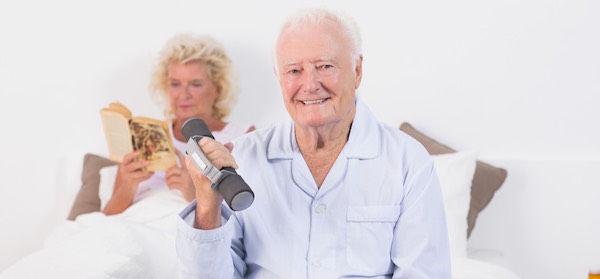Sex is often referred to as the breakfast of champions, and breakfast is commonly called the most important meal of the day. So does that mean you can have sex for breakfast? If that’s the case, then one thing is for sure: if we’re lucky to ‘eat’ breakfast daily, we’d all be assured of losing weight.
Okay, so it’s fair to say that sex may be the food of love, but, strictly speaking, it’s not food. Lately, though, I have read a few studies that claim that, while sex may not be considered a meal, it could possibly be considered exercise. So, how does that work?
Studies from a book called Human Sexual Response published in the 1960s found that the body’s response to sex is comparable to exercise, with ‘participants’ showing increased respiratory and heart rates, as well as higher (but still healthy) blood pressure. These are all signs of the body working at an elevated rate similar to when you exercise.
According to www.fitday.com, research shows that women who exercise regularly lead more active sex lives, can climax quicker and are more easily aroused in general. And being fit also means that you can afford to have a more adventurous sex life. But what about the sex itself?
Depending on the vigour of your lovemaking, sex can have the same effect as an intense workout: you burn calories, strengthen muscles, stretch parts of your body you normally would not, and increase your heart rate along with your metabolic rate – again, all signs that are similar to exercise. However, an average cardio session lasts around half an hour, so, unless you’re a dynamo between the sheets, you’re most likely not getting the same benefits.
As with all things in life, you get out what you put in (no pun intended), so factors such as effort, body weight, duration, flexibility and the number and type of positions employed all play a part in the final outcome.
One thing that cannot be denied is that, depending on the positions in which you partake, sex can be good for strength training. If you’re on top, your arms and legs will get a workout. Even if you’re the more passive partner, thrusting is great for your core, glutes and stomach muscles. Being on the bottom means you can also limber up your pelvic floor, which is fabulous for preventing incontinence, improving bowel function, reducing the risk of prolapsed internal organs and recovering from prostate cancer (obviously one for the fellas). It also has the potential to increase sexual sensation and promote more powerful orgasms.
It is worth noting, however, that proper strength training requires building up all your muscle groups. The act of sex really only affects certain areas, unless, of course, you play around with positions. It may even be a fun exercise to talk with your partner about positions that can create benefits for various body parts and muscle groups to improve your overall muscle conditioning. Here are a few creative suggestions to get the conversation started.
So, sex is great fun (if you’re doing it right) but can we call it exercise? At best estimates, and, as discussed earlier, depending on your effort and positioning, you may receive around a 75 per cent benefit compared to exercise. So, if you’re not exactly burning out your bedsprings, then you may wish to consider other forms of complementary exercise.
Running around an oval, doing a few push-ups or lifting the odd weight here and there may not be as fun as the old rough and tumble but, for the sake of your health and longevity – both in years and between the sheets – it can’t hurt to get physical. And no one’s asking you to wear leg warmers and a leotard, unless, of course, you’re into that kind of thing!
🙂
Related articles:
Why sex is good for you
Sexercises to improve your sex life
What older women want in bed

